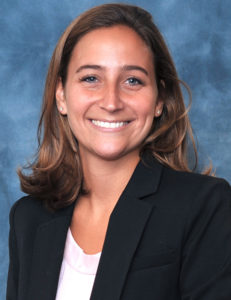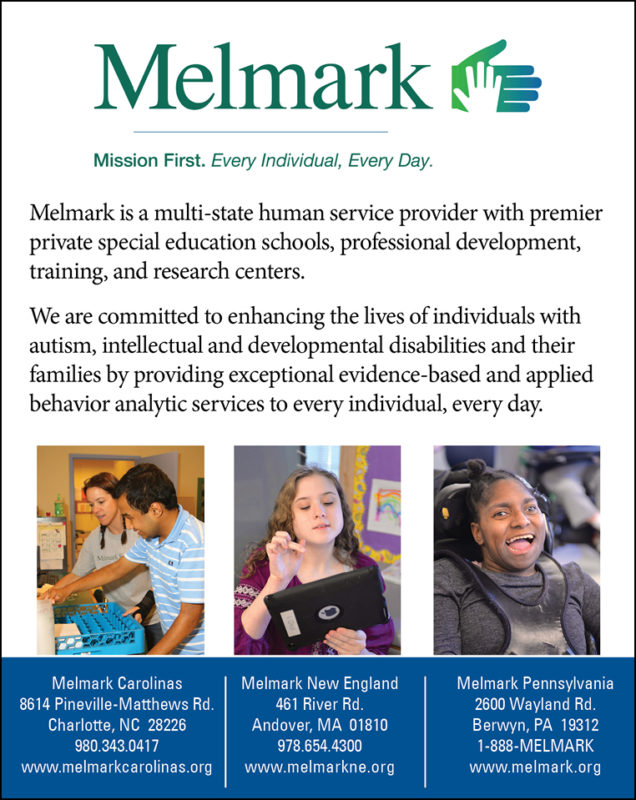Individuals with autism spectrum disorders (ASD) have complex needs, and their challenges include social deficits, communication difficulties, and behavioral challenges (APA, 2017). The needs of individuals with ASD necessitate the expertise of several professions, including behavior analysis and speech therapy. The dual expertise of these disciplines is most obviously needed in addressing the communication needs of nonvocal learners with ASD. Approximately half of individuals with ASD do not communicate effectively through vocal means, and many are helped with alternative/augmentative communication modalities.

Jennie Labowitz, MS, NCSP, BCBA

Mary Jane Weiss, PhD, BCBA-D
The selection of the alternate communication modality is a complex process, often fraught with differing opinions of professionals, and complicated by parental worry about selecting the right path. In fact, the use of an alternative communication modality universally helps the individual with ASD in several important ways. First, it gives a voice to the individual, enabling them to convey their needs and preferences. Second, providing the individual with control over their environment which reduces the incidence of challenging behaviors, as frustration is reduced. Third, it builds independence and supports maximal autonomy by increasing the self-efficacy of the individual with ASD.
Interdisciplinary teams often struggle with this modality choice, consequently, the exact direction to go in for communication can be a source of confusion and dispute. At times, there is an ideological predisposition to prefer a particular modality. For example, the clinician may be trained thoroughly in Picture Exchange Communication System (PECS), and see its value in rapid acquisition, ease of use, and universal comprehension. Alternately, the clinician may subscribe to the Applied Verbal Behavior model of intervention and have a strong preference of sign language as an alternate modality. When two professionals on the team prefer different modalities, it can be difficult to navigate. The conversation may be further complicated by parental concern about whether the use of an alternative system will preclude the development of vocal communication.
These decisions, however, should never be about ideology or about trainer preference/expertise. The decision about the communication modality to be used by a learner with ASD should be about individualization, which modality will work best for each learner. In essence, the team matches the learner to the modality that is best suited to their needs, characteristics, learning style, and preferences.
Literature Review
As mentioned, at least 30 percent of individuals with ASD are not effective vocal communicators (e.g., Wodka et al., 2013), and these learners require the provision of an alternate modality (e.g., Mirenda, 2001). Historically, these learners have been given PECS or sign language, or an augmentative device (Mirenda, 2001; 2003). Recently, more learners with autism have been using tablets with various speech-generating software (Malone et al, 2009; Lorah et al., 2015); (e.g., functional communication training (Ringdahl, et al., 2016), and social repertoires (e.g., Sigafoos et al, 2009). For the purposes of discussion, the modalities are usually abbreviated in the following manner: Manual Sign (MS); Picture Exchange (PE); Speech Generating Device (SGD), including the voice output tablet.
In recent years, there have been a number of studies focused on assessing the acquisition and use of communicative responses using these various modalities. In general, acquisition has been demonstrated across modalities, with stronger and more consistent data on acquisition in PE and SGD formats, compared to manual sign. Sigafoos et al (2009) and Son et al (2009) demonstrated that both PE and SGD were successful in increasing communicative responses in individuals with ASD. McLay et al (2016) found that three of four participants acquired the communicative responses across three modalities; MS, PE, and SGD. One participant failed to acquire through manual sign. Generalization and maintenance data were stronger for PE and SGD than for MS. Van der Meer et al (2012) demonstrated differential acquisition and idiosyncratic preferences across modalities for learners with ASD and emphasized that faster acquisition and improved maintenance resulted from the use of preferred modalities.
An additional consideration in the literature is stakeholder opinion. Ganz (Ganz et al, 2014; Ganz, 2015) has emphasized the need to incorporate the preferences of the learner and of the family in the decision on modality. Torelli et al (2016) emphasized the need to examine parental preference, as well as participant preference, and demonstrated a means for examining their alignment. Lorah (2016) explored learner teacher preference, and found that both learners and teachers preferred a SGD to a PE system. In this study, the teachers’ ability to implement the protocols with precision were explored, and fidelity in implementation was equivalent. Other recent studies have indicated that preferences generally exist among learners with ASD, and extend to manding (e.g., Mallone et al, 2009); (e.g., functional communication training (Ringdahl et al., 2016), and social repertoires (e.g., Sigafoos et al, 2009).
Overall, the literature supports that multiple modalities can result in the acquisition of communicative responses in learners with ASD. Often, there are idiosyncratic differences in acquisition, with one or more modalities being associated with better rate of learning. In general, both PE and SGD data are more robust in demonstrating acquisition, compared with MS, in learners with ASD. In addition, idiosyncratic preferences of learners with ASD have been consistently identified, demonstrating that learners might choose one modality over others. Many learners seem to prefer SGD to any other modality, although some also prefer PE. Similarly, parents and educators demonstrate preferences, often for SGD. The general consensus is that learners with ASD should be assessed for differential acquisition and preference before being assigned a primary communication modality.
Development of an Assessment Tool
The decision to create a protocol for the determination of the best modality for communication is an interdisciplinary team decision. A process must be created that allows the decision to be guided by data and that respects the expertise of all members of the team. Speech-Language Pathologists (SLPs) are in the best position to determine the modalities to assess, the vocal approximations to consider, the signs to use, and the software/apps to use on the SGD. SLPs should be consulted about how to equate the responses as well (e.g., what would an appropriate two-step sign be for a particular item?). The behavior analysts may conduct preference assessments to determine the most highly preferred items to be taught as responses.
Elements of a Sample Protocol
Acquisition: Following a preference assessment, items are assigned to modalities. In general, three items are assigned to each of the three modalities. (In other words, a total of nine items might be taught, three initially assigned to each of the three modalities.) In general, all items are also taught in all modalities, as well. Mastery is defined as 10 independent requests. Errorless teaching is used, and prompts are delivered in a most intrusive to least intrusive hierarchy. Common modalities may include:
- Picture Exchange. A two-inch by two-inch icon representing the target edible is centered on the front of a small binder. The student exchanges the icon to a communicative partner.
- Speech output device (iPad© with Proloquo2Go). The participant activates the speech output device by: touching the category folder (food), and then touching a picture of the target edible.
- Manual Sign. A two-step sign, or a two-step approximation of the sign is identified by the SLP. Approximations that are acceptable are identified and trained.
Choice: If more than one modality is associated with acquisition, then choice is assessed through a variety of means. For example, Signal or color cards that have been paired with each modality might be available for the learner to indicate which modality they would like to use. If PE and SGD are the effective modalities, both might be present and available in a free-choice context.
Additional Assessments: In addition to looking at acquisition and preference, additional extensions include:
- Spontaneous use: Data are collected on the spontaneous use of all modalities across the instructional day in natural contexts, to provide validation of the assessment.
- Social Validity: Parents and teachers are asked questions about which modality was easiest to understand (as a communication partner) and which modality seemed to be preferred by the learner.
- Parent/Instructor Preference: Parents and teachers are queried about their own preferences in working with/responding to the communications.
Summary
It is important to match the individual with ASD to the best communication modality option for them. This decision should be based on an individualized, data-based assessment of differential acquisition across modalities. In addition, it is important to examine the preferences of the learner and their stakeholders, to ensure that the learner will use and be supported to use the selected modality. Acquisition can be assessed by teaching communicative responses for multiple items across multiple modalities. When relevant, preferences can be assessed in a choice format. It is also important to ultimately examine spontaneous use and social validity, to get information on the real life impact the communication modality has on the learner’s independence, autonomy, and self-determination.
Mary Jane Weiss, PhD, BCBA-D, is Senior Director of Research at Melmark Inc. Jennie Labowitz, MS, NCSP, BCBA is Senior Director of Children’s Services at The Melmark School, Pennsylvania. Correspondence concerning this article should be addressed to Jennie Labowitz, MS, NCSP, BCBA, Senior Director of Children’s Services, Melmark Pennsylvania, 2600 Wayland Road, Berwyn, PA 19312, or by email at jenniferlabowitz@melmark.org. For more information, visit www.melmark.org.
Melmark is a multi-state human service provider with premier private special education schools, professional development, training, and research centers. We are committed to enhancing the lives of individuals with autism, intellectual and developmental disabilities and their families by providing exceptional evidence-based and applied behavior analytic services to every individual, every day.
References
Ganz, J. B., Mason, R. A., Goodwyn, F. D., Boles, M. B., Heath, A. K., & Davis, J. L., (2014). Interaction of participant characteristics and type of AAC with individuals with ASD: A meta-analysis. American Journal on Intellectual and Developmental Disabilities, 119, 516–535. doi: 10.1352/1944-7558-119.6.516.
Ganz , J. B. (2015) . AAC Interventions for Individuals with Autism Spectrum Disorders: State of the Science and Future Research Directions, Augmentative and Alternative Communication, 31:3, 203-214, DOI: 10.3109/07434618.2015.1047532.
Lorah, E. (2016) Comparing Teacher and Student Use and Preference of Two Methods of Augmentative and Alternative Communication: Picture Exchange and a Speech-Generating Device. Journal of Developmental and Physical Disabilities, 28, 751-767.
Lorah, E. R., Parnell, A., Whitby, P., & Hantula, D. (2015). A systematic review of tablet computers and portable multimedia players as a speech-generating device for individuals with autism spectrum disorder. Journal of Autism and Developmental Disorders, 45, 3792–3804.
Malone, H. & DeBar, R. & Sigafoos, J. (2009). An examination of preference for augmentative and alternative communication devices with two boys with significant intellectual disabilities. Augmentative and Alternative Communication , 25. 262-73. 10.3109/07434610903384511.
McLay, L., Schafer, C. M., van der Meer, L., Couper, L., McKenzie, E., O’Reilly, M. F., & Sutherland, D. (2016). Acquisition, preference, and follow-up comparisons across three AAC modalities taught to two children with autism spectrum disorder. International Journal of Disability, Development and Education, 64, 117-130. doi:10.1080/1034912X.2016.1188892.
Mirenda, P. (2001). Autism, augmentative communication, and assistive technology what do we really know? Focus on Autism and Other Developmental Disabilities, 16, 141–151.
Mirenda, P. (2003). Toward a functional and augmentative and alternative communication for students with autism: manual signs, graphic symbols, and voice output communication aids. Learning, Speech, and Hearing Services in Schools, 34, 203–216.
Ringdahl, J. E., Berg, W. E., Wacker, D. P., Ryan, S., Ryan, A., Crook, K., and Molony, M. (2016). Demonstrations of individual preference among mand modalities during functional communication training. Journal of Developmental and Physical Disabilities, 28, 905-918.
Sigafoos, J., Green, V. A., Payne, D., Son, S. H., O’Reilly, M. F., & Lancioni, G. E. (2009). A comparison of picture exchange and speech generating devices: Acquisition, preference, and effects on social interaction. Augmentative and Alternative Communication, 25, 99–109.
Son, S., Sigafoos J., O’Reilly , M., & Lancioni, G. E. (2009) Comparing two types of augmentative and alternative communication systems for children with autism. Pediatric Rehabilitation, 9, 389-395.
Torelli, J. N., Lamber, J. M., DaFonte, M. A., Denham, K. N., Jedryznski, T. M., & Houchins-Juarez, N. J. (2016). Assessing acquisition of and preference for mand topographies during functional communication training. Behavior Analysis in Practice, 9, 165–168.
van der Meer, L., Sutherland, D., O’Reilly, M. F., Lancioni, G. E., & Sigafoos, J. (2012). A further comparison of manual signing, picture exchange, and speech-generating devices as communication modes for children with ASD. Research in Autism Spectrum Disorders, 6, 1247-1257.
Wodka, E. L., Mathy, P., & Kalb, L. (2013). Predictors of phrase and fluent speech in children with autism and severe language delay. Pediatrics, 131, 1128–1134.






